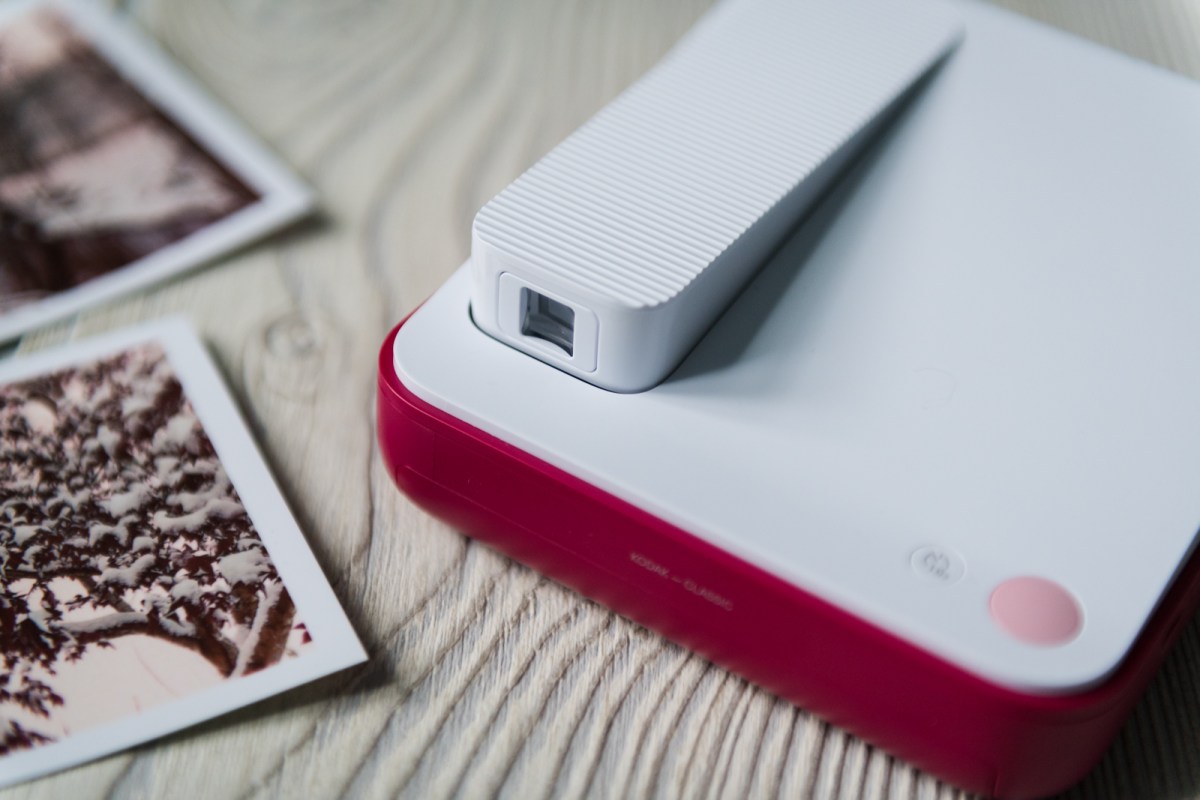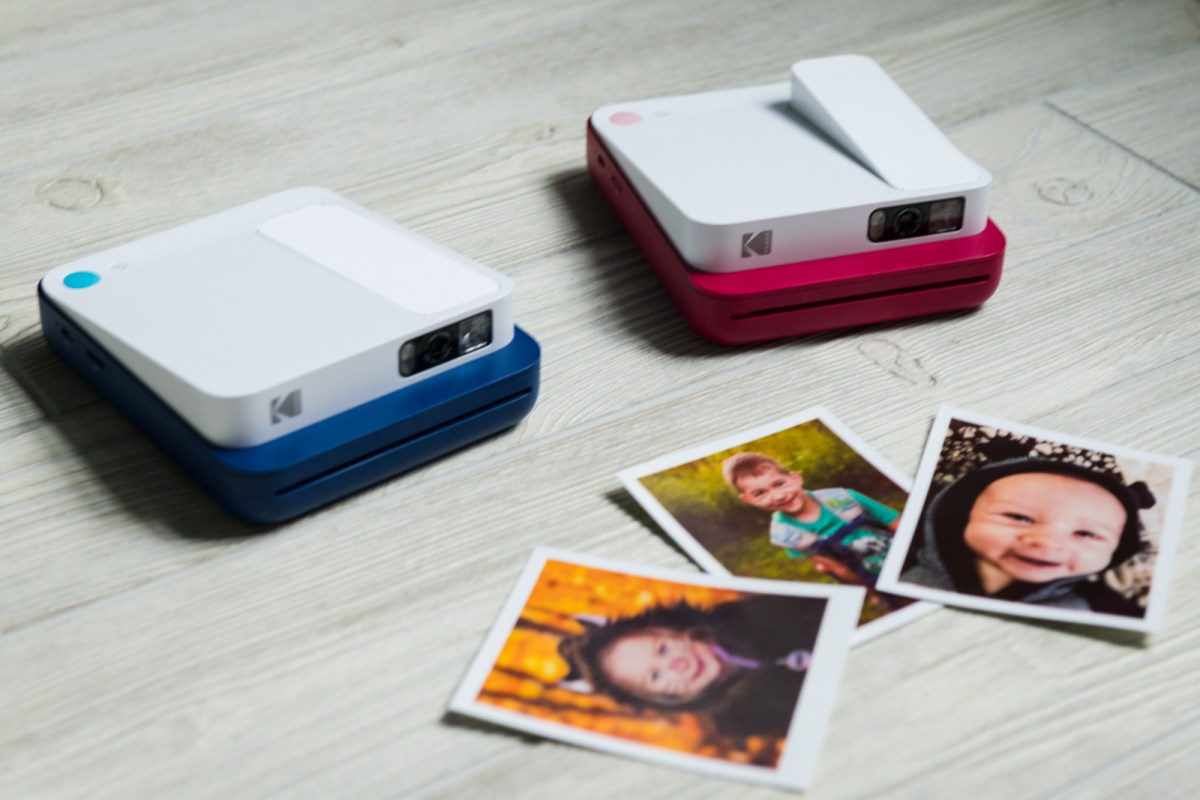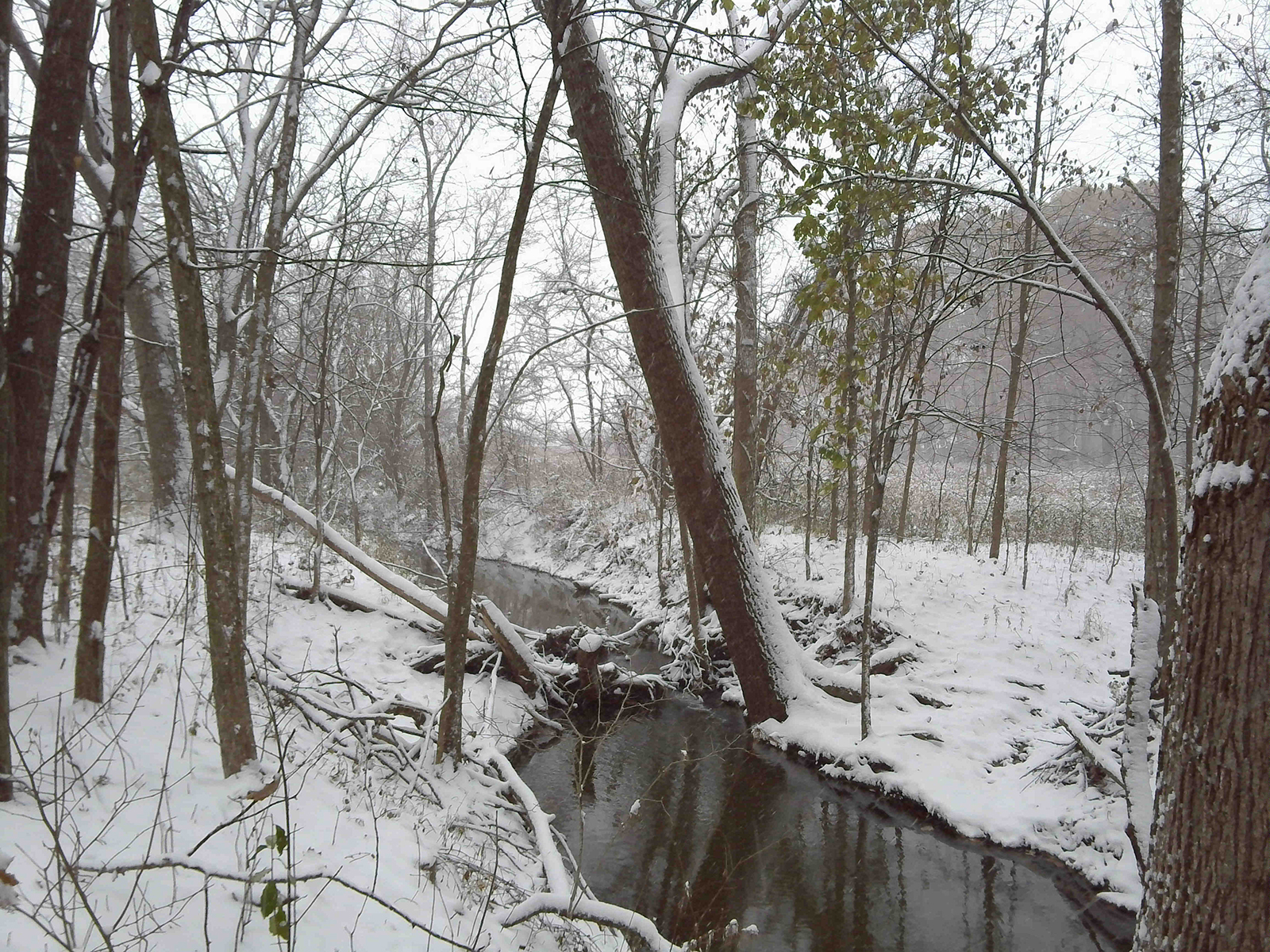“As a mobile printer, the large prints look great -- but a wonky viewfinder, slow shutter, and buggy app make the Smile Classic difficult to use.”
- Retro design
- 2-in-1 print capability
- Large prints
- Slow shutter
- Inaccurate viewfinder
- Pink instant prints
- Bluetooth printing glitches
Nostalgia has a death grip on the camera industry, and if there’s anything that the Kodak Smile Classic instant camera offers, it’s the retro design takes you back to Saturday mornings spent watching cartoons from a rabbit-eared television or evenings spent dying of dysentery on the Oregon Trail.
The Kodak Smile Classic instant camera (made by Kodak licensee C+A Global) starts up with a melodic beep that sounds like a 90s handheld video game — a sense of nostalgia that continues throughout the clunky, plastic body. The metadata even dates the photos for 1979. But while the camera may look retro, the innards are all digital, with a 16-megapixel sensor and a Zink printer that spits out 3.5 x 4.25-inch prints. The 2-in-1 camera also uses Bluetooth to connect to and print photos from your phone.
However, retro technology doesn’t always spark a longing for the ‘good old days’ and instead gives us a better appreciation for how far we’ve come. Nobody’s replacing their broadband internet with a dial-up modem, after all. Will this $150 instant camera end up shoved in the back corner of some closet, or is it charming enough you’ll actually continue to use it?
Retro, colorful design
The Kodak Smile Classic looks and feels like a familiar instant camera from the 90s, but isn’t based off a specific Kodak vintage camera. Instead, it borrows bits and pieces from various cameras while taking liberties to make it smaller than similar vintage options. It has the plastic build and bright colors of a camera from the 80s or 90s, and the mini-pizza-box shape is more like the Kodak EK4 or Polaroid One Step than today’s more upright cameras.
The bottom part of the Smile Classic, which houses the printer, is about the size of a portable CD player (if you are old enough to remember those). The top half sticks out at an angle in order to house the camera components. A small optical viewfinder pops up from the top when the camera is powered on from the switch at the side. A MicroSD card slot and a USB port are on the opposite side.

Shooting with the Kodak Smile Classic isn’t exactly graceful — imagine holding a portable CD player up to your eyeball — but I’ll file that under sacrifices I’m willing to make for nostalgia.
The quality of the parallax viewfinder is less forgivable, however, and isn’t even close to what the photo will actually look like. The camera captures a much wider view than the viewfinder indicates. Even knowing that, I still wound up taking a photo of my foot.
Unlike the Kodak Smile (sans Classic in the name), there’s no LCD screen at the back to review images and choose whether or not you want to print out that photo of your foot. Instead, everything prints. Like a true instant camera, this inspires you to be more careful with your shots, but it also wastes Zink paper (and money).
User experience
If the body design doesn’t take you back in time, the user experience will. There’s something about the inability to see the photo that you’ve taken until it actually spits out of the camera that is rewarding and fun. At the same time, that also means wasted paper when the shot doesn’t go your way. And on a camera with minimal features, that happens often.
Aside from the power switch which pops up the viewfinder, there are only two buttons on the whole camera: The shutter release and a button to activate the 10-second selfie timer.

Paper loads in the camera from the bottom. Unlike like paper used in smaller Zink cameras and printers, this larger Zink paper comes in individual sheets rather than a pack. It’s less convenient, but also less wasteful; every Zink paper pack includes a plastic piece that ends up in the landfill.
When you snap a photo with the Smile Classic, you’ll hear a series of beeps that lasts about two and a half seconds. The trouble is, I had no idea if the photo was being taken on the first beep, the last beep, or somewhere in between. That made it impossible to photograph any kind of moving subject. Besides not being able to get the timing right with the shutter lag, photos of moving objects were always blurred since there’s no way to adjust the shutter speed. No instant camera is good for action, but the shutter lag makes it difficult to even photograph a pet that knows how to sit and stay.
But the camera is only half of the equation. Bluetooth connectivity also allows the Smile Classic to be used as a printer, spitting out photos sent from your phone. The app, like the one for the Kodak Smile, is well made and easy to use. Establishing a connection is simple, without any back-and-forth between the settings and the app. The app has a good selection of editing options, considering the primary function is to simply print photos.
But while getting a connection was easy and the user interface is well designed, there are still a few bugs. For one, photos would not print on the first attempt — but would print fine on the second. An app update fixed some bugs and connectivity issues mid-way through our review, but the camera still only printed on the second try.
Image quality
The Kodak Smile Classic takes a big step up from the Kodak Smile, moving from five megapixels to 16 and from 2 x 3-inch prints to 3.5 x 4.25-inch prints. Despite the upgrade, the images feel a bit lackluster — but that’s not entirely unexpected and, at times, part of the charm of instant photography.
Looking at the digital files, the details are smudged, like the image is a painting that got sat on before it was dry. That’s not surprising for a $150 instant camera, but don’t expect to use the digital files for larger prints than what you get out of the camera itself.
While prints sent via Bluetooth met expectations, images captured by the camera itself printed with odd colors. Originally, I thought this was due to taking the first film pack out in the cold, since extreme temperatures can negatively affect Zink paper. But a second paper pack, which produced excellent results when working with a photo from a smartphone or DSLR, still produced images that were very pink-hued when shooting with the camera itself. Photos have good colors in the digital file, and prints sent from a smartphone have good color, but for some reason, all the shots we had from the camera itself turned out pink.

Colors on Zink tend to be a bit exaggerated, with some over-saturation most noticeable with skin tones. Shadows are also a bit darker and some images had splotchy color. But, the larger print size is a big plus and the print quality was consistent with what we expected based on our experience with other Zink printers.
Our Take
The Kodak Smile Classic 2-in-1 retails for about $150 while the paper sells for around $1 a photo in packs of 10, 20, or 40. While instant cameras are easy to find, the Smile Classic offers a larger print size than most with the dual functionality of printing from a phone, too.
The nostalgia and larger print size has to be a priority for users to fall in love with this camera, however. The viewfinder is way off and every photo prints whether you would have wanted it to or not. Printing from Bluetooth is also a bit buggy, with the first attempt to print failing every time but the ‘reprint’ spitting out without a problem.
Is there a better alternative?
Zink cameras are easy to find — there’s the Polaroid Snap, the Canon IVY Cliq Plus, and the original Kodak Smile, to name a few. But the list of cameras that can spit out a larger 3.5 by 4.25 inch print is much smaller.
The Polaroid Pop 2.0 offers a similar print size with less nostalgia, but offers a touchscreen to avoid wasted prints, a 20 megapixel camera, and even the option to shoot 1080p video. Without testing out the Polaroid Pop, we can’t say if the camera offers a better experience or not, but the list of features is longer.
The Polaroid OneStep 2 is packed with nostalgia and one we preferred shooting with in our hands-on review, but it’s a true instant film camera without the option to print from a smartphone.
If that built-in camera isn’t a necessity, the Kodak Smile printer offers a more seamless print experience, albeit in the smaller 2 x 3-inch size. The Canon Selphy will get you bigger 4 x 6-inch prints for less cash, but it’s not a Zink printer or a 2-in-1.
How long will it last?
With some care, the Kodak Smile Classic should hopefully keep shooting and printing for several years, as long as the company keeps the app up-to-date.
Should you buy it?
No, not as an instant camera, anyway. The pink prints, inaccurate viewfinder, shutter lag, and app bugs make it difficult to recommend. But, images printed from a smartphone turned out solid and the print size is larger than most. It may be an okay choice for a mobile printer, but don’t expect to get much use out of the camera portion.






